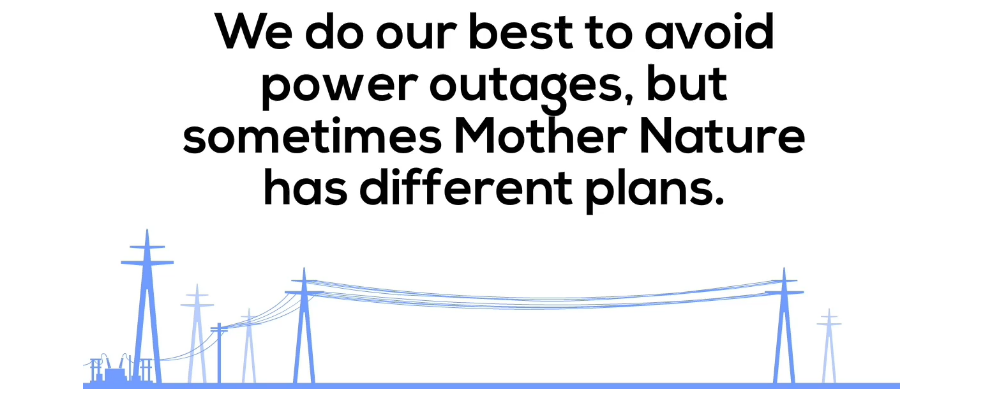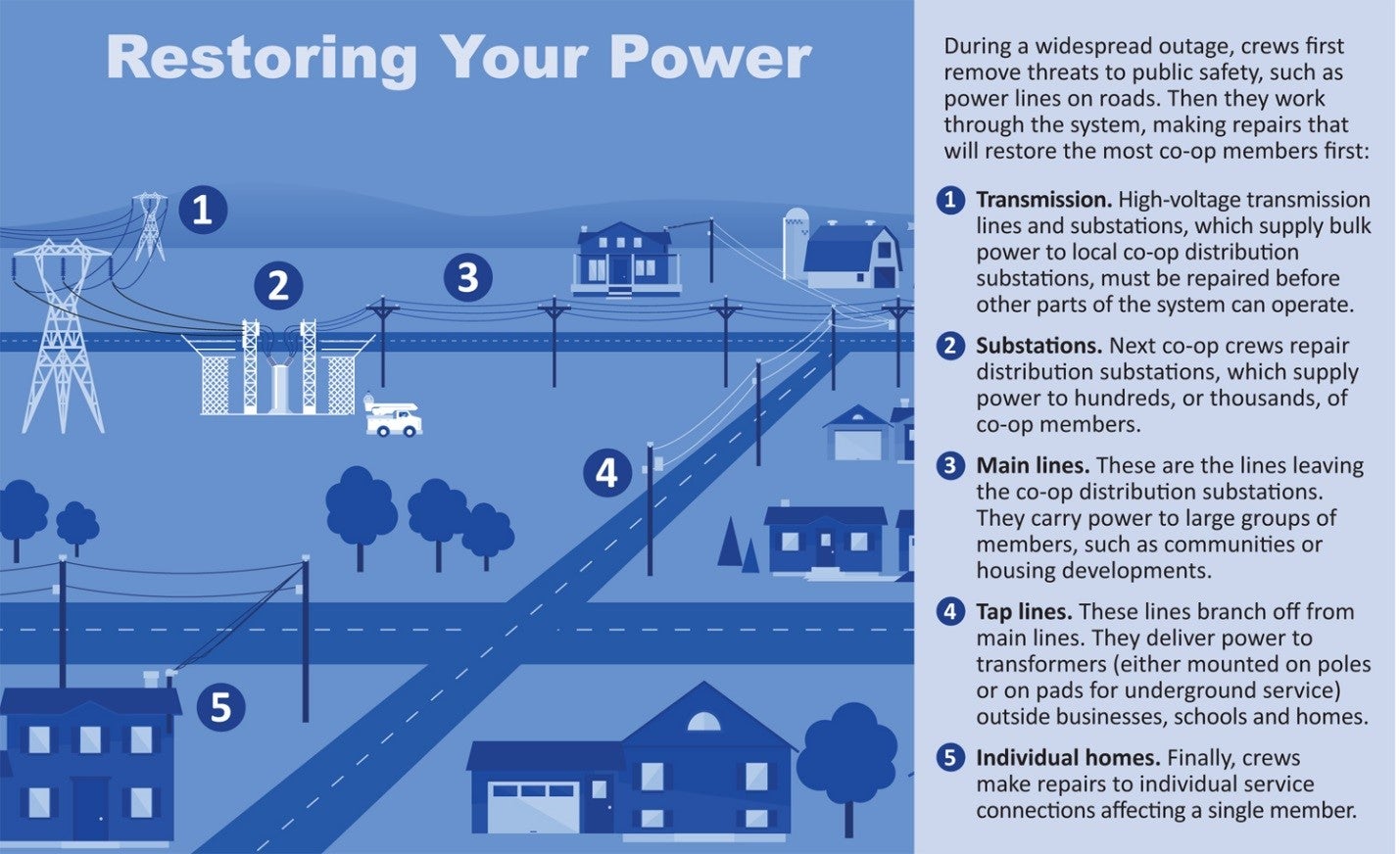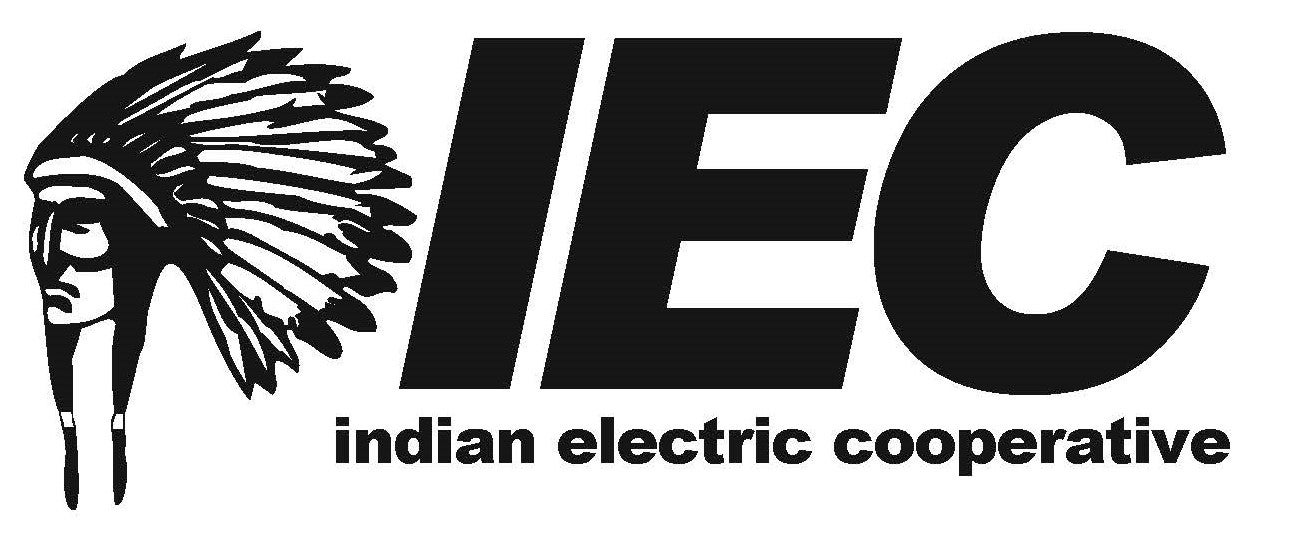
When electricity goes out, most of us expect power will be restored within a few hours. But when a major storm causes widespread damage, longer outages may result. IEC line crews work long, hard hours to restore service safely to the greatest number of consumers in the shortest time possible.
Here’s what’s going on if you find yourself in the dark:
1. High-Voltage Transmission Lines
Transmission towers and cables that supply power to transmission substations (and thousands of members) rarely fail. But when damaged, these facilities must be repaired before other parts of the system can operate.
2. Distribution Substation
Each substation serves hundreds or thousands of consumers. When a major outage occurs, line crews inspect substations to determine if problems stem from transmission lines feeding into the substation, the substation itself, or if problems exist down the line.
3. Main Distribution Lines (Feeders)
If the problem cannot be isolated at a distribution substation, distribution lines are checked. These lines carry power to large groups of consumers in communities or housing developments.
4. Tap Lines
If local outages persist, supply lines, called tap lines, are inspected. These lines deliver power to transformers, either mounted on poles or placed on pads for underground service, outside businesses, schools and homes.
5. Individual Homes
If your home remains without power, the service line between a transformer and your residence may need to be repaired. Always call 855-940-3844 or use the SmartHub app to report an outage to help line crews isolate local issues.

IEC Live Outage Map
State Co-op Outage Map
Generator Safety
Prepare for a Power Outage
Report Outage to IEC
855-940-3844 (automated outage line)
